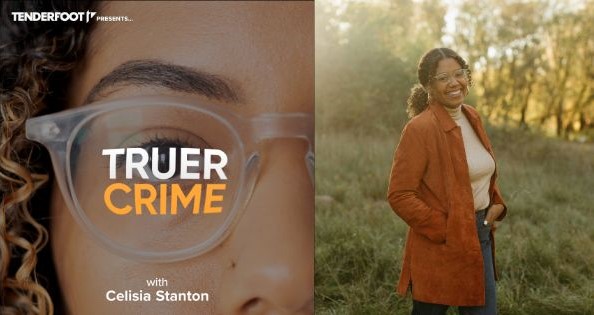Just two years ago, a joint venture by West Bank’s own Bedlam and Mixed Blood theaters created “West Bank Story,” a musical chronicling the history of the West Bank over the past century. The musical used three eras, the late 19th Century, the mid-’70s, and 2006 to explore the ever-changing community that is known as the West Bank. The show was created in partnership with a University class and using grassroots methods of gathering stories like a neighborhood potluck. Members of the two theaters put together the history and stories in a production that drew from and spoke about the West Bank.
Shows like “West Bank Story” may be particularly emblematic of Bedlam Theatre’s co-artistic director Maren Ward’s vision that theater can be and is a means to define and improve a community.
“Every single thing that is needed in this neighborhood,” she said, “arts can address in some way.” Instead of just placing security cameras everywhere to improve public safety, host a neighborhood barbecue so neighbors can get to know each other, she suggested. The West Bank is a particularly good place to test the theory, with its numerous theaters.
While Minneapolis is known for its theater, the West Bank area has also been one of the prominent places for theater in the Twin Cities area.
It has been home to a large number of theaters, including some that are still going strong, and some that have come and gone or moved on to other areas.
University Theatre
Probably the most visible to students is the University of Minnesota Department of Theatre Arts and Dance, housed in the Rarig Center since the early ’70s. The top-heavy Rarig looks foreboding and was built by Ralph Rapson, the architect of the original Guthrie Theater. The Rarig has four stages, all different types used by the students and their faculty, many of whom are professionals from the surrounding community.
Theatre in the Round
The Theatre in the Round, a blocky building with an ever-changing façade that lists the current and upcoming productions, is in the Seven Corners area. It is the oldest theater in Minneapolis. Founded in 1957, the theater company moved to the West Bank in 1969.
Southern Theatre
Just up Washington Avenue from Theatre in the Round is the Southern Theatre, a premiere rental space, with strong ties with the Department of Theatre Arts and Dance because of the numerous dance companies that use the theater as a performance space.
Mixed Blood Theatre
Visible from Washington Avenue are the giant red glowing letters attached to the red brick building, announcing the Mixed Blood Theatre. Founded in 1976, the theater is known for its multiculturalism and pluralism. The theater works to produce plays by playwrights and directors and about subjects not traditionally addressed in theater, in an attempt to break down racial and cultural barriers. The most recent example is “Love Person,” a play intertwining Sanskrit, American Sign Language and English to tell the story of two couples, one inter-racial and the other lesbian.
Bedlam Theatre
Deeper into the Cedar-Riverside neighborhood and behind the orange and blue stacks of the Riverside Plaza is the Bedlam Theatre, the baby of the bunch. It was founded in the ’90s, with a basis in the alternative culture of which many of the current hipsters and older-generation hippies pride themselves on. Bedlam found a home on West Bank in 1996.
“We understood right away,” Ward said. “It’s a special place.
So Long
Where the Town Hall Brewery now stands, was the place where Dudley Riggs and his troupe entertained audiences before moving to their current location in Uptown as the Brave New Workshop.
Closer to campus, near the Barbara Barker Center for Dance, is the Cedar Riverside People’s Center, which offers a theater space as well as various medical and social services. The now defunct At the Foot of the Mountain was located on the same block from the mid-’70s to the early ’90s.
At the Foot of the Mountain was a nationally known feminist theater, and was a place of debate for all sorts of feminists and theater-goers.
Community
With the abundance of theater activities, the area was designated the West Bank Theatre District, with the help of city funding in 1985. It forged collaboration between eight theater groups. An avid theater-goer could buy what was called a “Cultural Passport,” basically a voucher for six shows that could be used at any of the theaters. The District fell apart when it lost its funding, but the Theatre District logo, a spotlight on a silhouetted figure taking a bow, is still painted on the side of Theatre in the Round.
A new attempt at a coalition of the theaters on the West Bank is in the very early stages. Championed by a Humphrey Institute for Public Affairs group, CHANCE for Neighborhood Collaborative Engagement, is seeking to create some sort of theater and arts collaborative for the West Bank area.
It is the latest example of one of the buzz words in theater: collaboration.
Steve Antenucci, the executive director of Theatre in the Round since the early ’80s, called it “cross-pollination” that serves artistic as well as budgetary and marketing needs.
Sharing costumes, props, spaces, actors and directors is the “in” thing to do – to both help spread their dollars as far as possible and to invite new ideas and people into their theaters.
“Artists are exposed to different types of art,” he said, and theatres may gain audiences in the deal.
Examples can be seen all over the place: the Southern working with University students, professionals like Maren Ward teaching classes at the University, and “West Bank Story” where Bedlam performed in Mixed Blood Theater.
“The nature of the arts has changed and become more collaborative,” said Sherry Wagner-Henry, managing director of the University theaters. “Somewhat out of survival.”
The potential exposure to new audiences makes it particularly advantageous. University theaters usually have about a half-and-half ratio of students and faculty to general community, where collaborations with other theaters bringing new audiences. With the variety of theaters with such different missions, the theaters attract a variety of people, from the more traditional audiences of the Guthrie who are more likely to be seen at Theatre in the Round to the alt-culture co-opers who drink a beer in the back of the theater as they watch the Bedlam’s latest production.
The Theatre in the Round doesn’t usually share its audience with other theaters on the West Bank, as the Bedlam, Mixed Blood and Southern Theaters are more likely to, Ward said.
Theater-goers often make a night of it when going to the theater, getting dinner before, grabbing a coffee or a drink afterwards.
“The theaters make this a destination neighborhood,” Antenucci said.
Theatre in the Round has an arrangement with some surrounding restaurants for discounts, he said, with the restaurants sometimes staffing extra people to handle the rush.
The Bedlam offers a restaurant and bar before, during and after shows. It also engages with the community through outreach programs, holding a drama club for neighborhood children at the Brian Coyle Center, just down the street from Bedlam.
“The neighborhood is like a way of connecting people,” says Ward, “that we could never connect with if we were in another neighborhood.”







